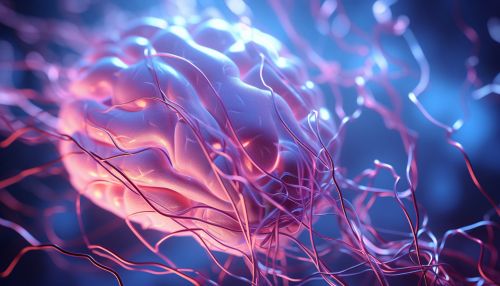Priming (psychology)
Overview
Priming in psychology refers to the process by which exposure to a stimulus influences the response to a subsequent stimulus. This phenomenon is a key aspect of cognitive psychology, and has been extensively studied in the context of memory and perception.
History
The concept of priming was first introduced in the 1970s by psychologists studying memory and perception. Early studies focused on the effects of priming on word recognition and recall, with researchers finding that exposure to a specific word could influence participants' ability to recognize or recall related words. This led to the development of the concept of semantic priming, which posits that our understanding of words and concepts is based on a network of related meanings.
Types of Priming
There are several types of priming, each of which involves a different mechanism and has different effects on behavior and cognition.
Semantic Priming
Semantic priming refers to the effect where exposure to a word causes related words to be more easily recognized or recalled. For example, if a person is exposed to the word "dog", they will be quicker to recognize or recall words like "cat" or "pet". This effect is thought to occur because words and concepts in our memory are organized in a network of related meanings, so activating one concept also activates related concepts.
Perceptual Priming
Perceptual priming is the effect where exposure to a stimulus makes it easier to identify or recognize similar stimuli in the future. For example, if a person sees a picture of a dog, they will be quicker to recognize other pictures of dogs. This effect is thought to occur because the initial exposure to the stimulus strengthens the neural pathways involved in recognizing that stimulus, making it easier to process similar stimuli in the future.
Associative Priming
Associative priming is the effect where exposure to a stimulus makes it easier to recall or recognize stimuli that are associated with it. For example, if a person is exposed to the word "salt", they will be quicker to recognize or recall the word "pepper". This effect is thought to occur because the initial exposure to the stimulus activates the neural pathways associated with it, making it easier to process related stimuli in the future.
Repetition Priming
Repetition priming is the effect where exposure to a stimulus makes it easier to recognize or recall that stimulus in the future. For example, if a person reads a list of words, they will be quicker to recognize or recall those words if they appear in a later list. This effect is thought to occur because the initial exposure to the stimulus strengthens the neural pathways involved in processing that stimulus, making it easier to process the same stimulus in the future.
Mechanisms
The mechanisms underlying priming are not fully understood, but several theories have been proposed. These theories generally involve changes in the neural pathways involved in processing the primed stimulus, which make it easier to process that stimulus or related stimuli in the future.


One theory is that priming involves changes in the strength of the connections between neurons. According to this theory, when a stimulus is processed, the connections between the neurons involved in processing that stimulus are strengthened. This makes it easier for those neurons to fire in response to the same or a related stimulus in the future, resulting in the priming effect.
Another theory is that priming involves changes in the activation levels of neurons. According to this theory, when a stimulus is processed, the neurons involved in processing that stimulus become more easily activated. This makes it easier for those neurons to fire in response to the same or a related stimulus in the future, resulting in the priming effect.
Applications
Priming has been studied in a variety of contexts, and has been found to have a number of practical applications.
Advertising
In advertising, priming is often used to influence consumers' perceptions of products. For example, an advertiser might use images or words that are associated with positive emotions to prime consumers to have a positive response to their product. This can make consumers more likely to purchase the product, and can also influence their perceptions of the product's quality and value.
Education
In education, priming can be used to enhance learning and memory. For example, a teacher might use priming to help students recall information more easily. This could involve presenting students with related information or concepts before introducing new material, which can prime students to more easily understand and remember the new material.
Clinical Psychology
In clinical psychology, priming has been used to study and treat a variety of disorders. For example, priming has been used to study the cognitive deficits associated with disorders like Alzheimer's disease and schizophrenia, and has also been used in the treatment of disorders like phobias and post-traumatic stress disorder.
Criticisms and Controversies
Despite its widespread use, priming has been the subject of several criticisms and controversies. One major criticism is that the effects of priming are often small and inconsistent, which has led some researchers to question the validity of the concept. Additionally, some researchers have argued that the mechanisms underlying priming are not well understood, and that more research is needed to fully understand this phenomenon.
